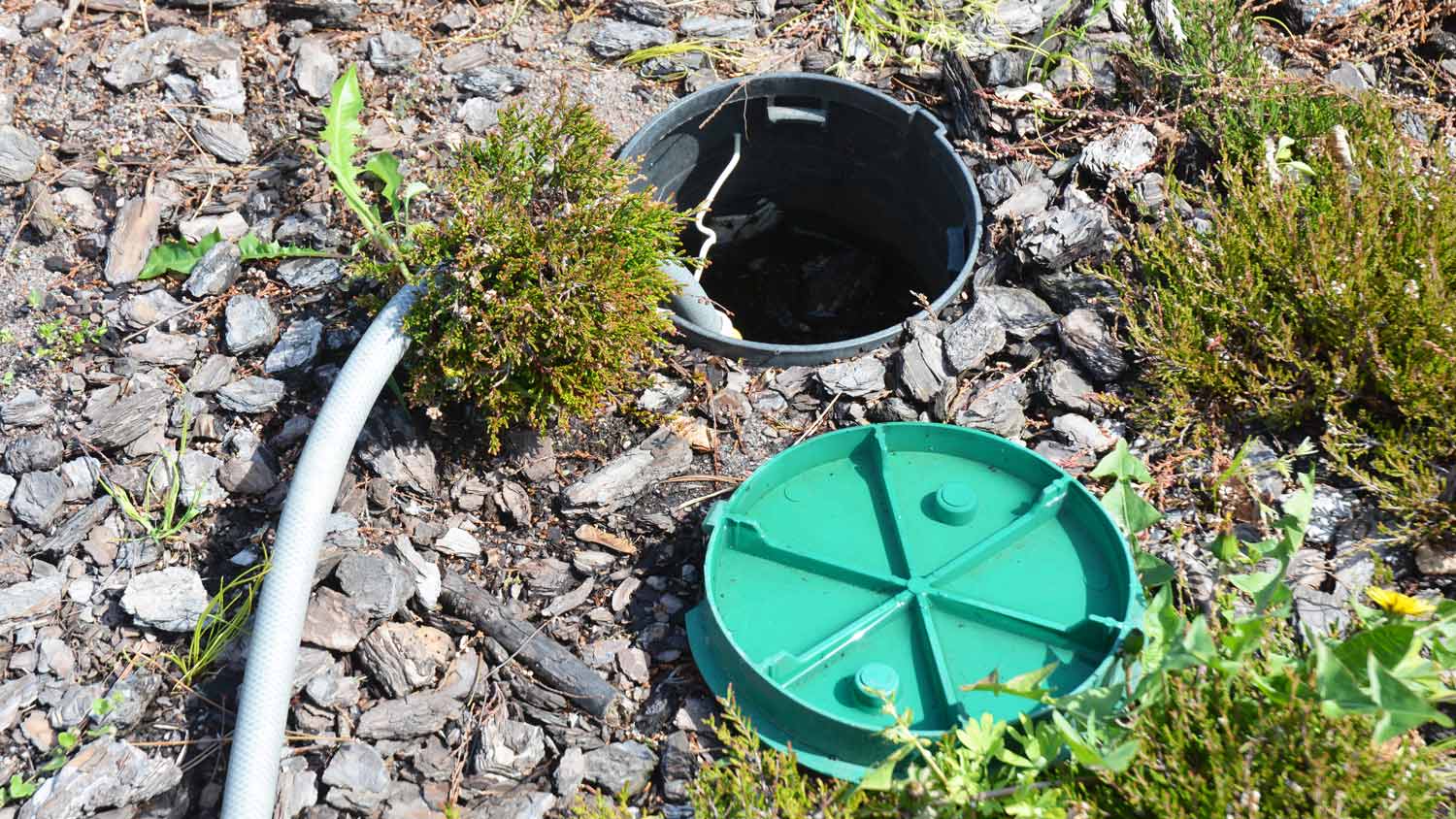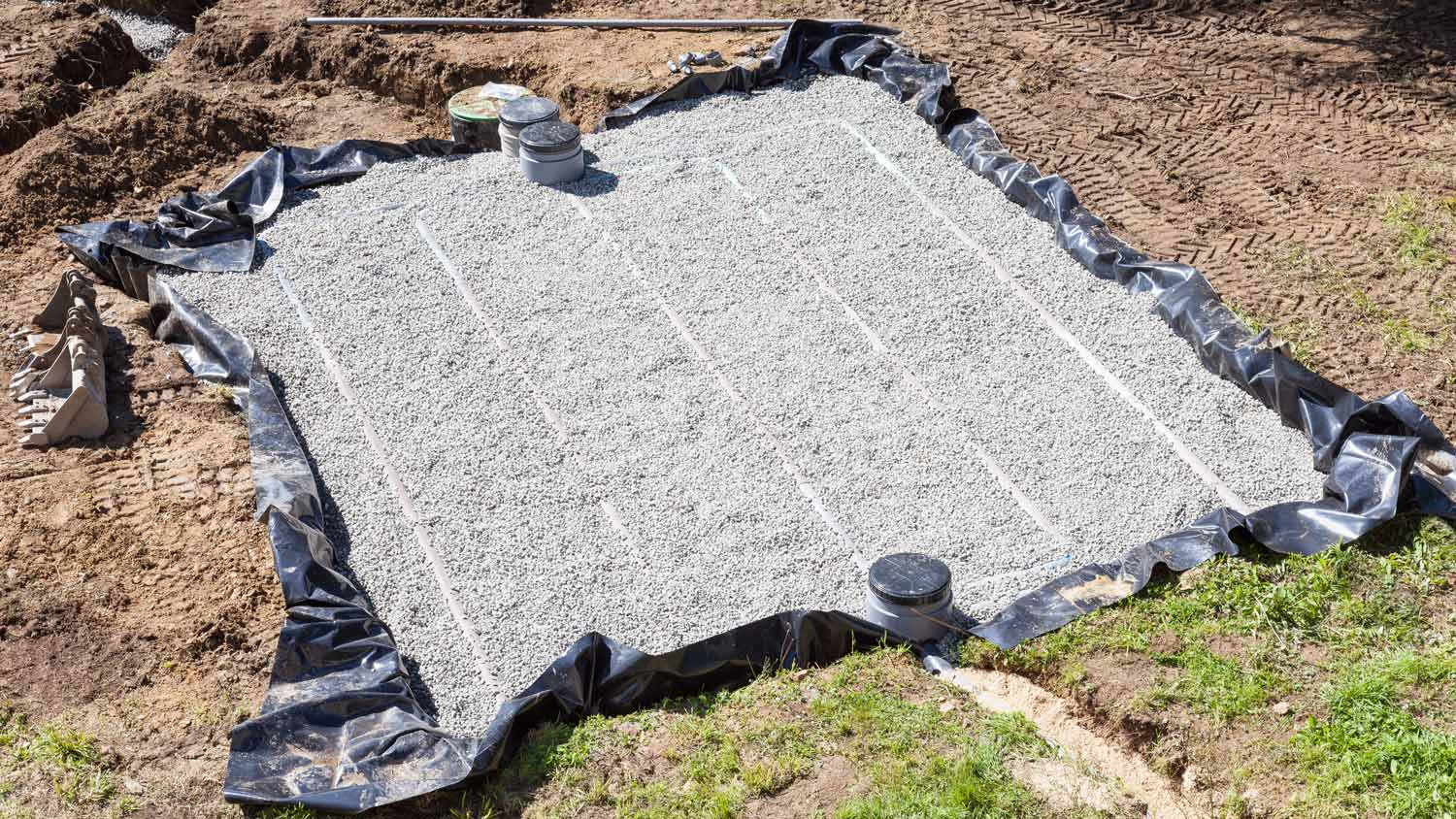What Are Septic Lateral Lines and How Do They Work?
Septic lateral lines distribute treated wastewater into the soil


Highlights
Septic lateral lines leach treated wastewater into your soil evenly and safely.
There are many styles of septic lateral lines to match different types of septic systems.
Septic lateral lines typically last for 25 to 40 years.
You should always leave septic lateral line maintenance to a certified professional
Septic systems can be confusing pieces of equipment to understand, often with multiple chambers and tanks all serving different purposes. Septic lateral lines are the end of the line for treated wastewater in a septic system, making them one of the most crucial components for safe waste disposal. In this guide, we’ll explain how septic lateral lines work, why they’re so important, and what happens if you have an issue with yours.
How a Septic System Works

In order to understand septic lateral lines and how important they are, you should first know the basics of a septic system.
Generally speaking, sewage from your home enters your septic tank, where bacteria consume the waste products, cleaning the sewage. The liquid waste then moves from your septic tank to a distribution box, which distributes the treated sewage into the soil. There are a few key components of the system:
Trash tank: First, the waste and wastewater from your main sewer line enter the trash tank, where solid waste separates from the liquid waste. Liquid waste eventually flows into the mixing tank.
Mixing tank: The mixing tank is where the majority of the sewage treatment occurs. Depending on the type of septic system you have, you may have an air compressor pumping oxygen into this section to help bacteria thrive.
Settling tank: Treated waste from the mixing tank then flows into the settling tank, where any solid waste that made its way into the mix separates and flows back to the mixing tank.
Distribution box: The treated waste then makes its way into a distribution box, sometimes called a D-box. The D-box either distributes treated waste evenly throughout underground pipes for disposal or uses a pump to pump the liquid to a sprinkler system or some other distribution system.
Leach field: The leach field is the area through which the pipes run to distribute treated water evenly throughout the soil. The pipes that run through the leach field are called septic lateral lines.
What Are Septic Lateral Lines?
Septic lateral lines are the pipes that run through your leach field, which is the area of your property across which your treated wastewater is distributed. The soil in the leach field sometimes contains aerobic bacteria, which continue to treat the effluent and scrub it clean before it mixes with groundwater.
How Do Septic Lateral Lines Work?
Septic lateral lines work by evenly distributing treated wastewater to a section of your property for safe disposal. The lines are usually made from polyvinyl chloride (PVC) pipe that has perforations to allow the water inside to exit out into the soil.
Depending on the type of septic system you have, some lateral lines empty completely into the soil, and some route some effluent back to the distribution box, at which point it would travel back to the leach field continuously until it was all dispersed into the soil.
How Important Are Septic Lateral Lines?
Septic lateral lines are an integral part of most septic systems, and proper functionality helps maintain healthy groundwater and avoid issues with concentrated wastewater in the soil. There are a few things septic lateral lines help prevent:
Flooding and oversaturation of the soil in specific areas in your leach field.
Partially treated sewage mixing with and contaminating groundwater.
The distribution box overflowing.
Types of Septic Lateral Lines

There are a few different types of lateral lines septic systems can have extending from your distribution box, depending on the type of septic system and leach field system you have.
Conventional septic system: In a conventional septic system, sewage is only partially treated in the septic tank before traveling to the distribution box. In this system, the septic lateral lines are usually surrounded by gravel and soil filled with aerobic bacteria that continue to treat the sewage after filtering into the soil. These systems use numerous lateral lines for safe disposal.
Aerated septic system: Aerated septic systems include a mixing chamber that gets oxygenated by an air compressor. The high quality of the effluent that comes out means fewer lateral lines are necessary, and they often aren’t surrounded by gravel or soil full of aerobic bacteria. Some aerobic systems lead directly to a sprinkler system.
Septic sprinkler system: Some aerobic septic systems include a pump tank that delivers treated sewage to sprinkler heads for irrigation. In these cases, there are no traditional septic lateral lines. Instead, the “lateral lines” are really sprinkler lines that lead to special septic sprinkler heads.
Drip distribution system: In a drip distribution system, there’s a line that delivers effluent to smaller lateral lines spanning over a large section of your property. The effluent slowly drips out of small perforations, and excess liquid travels back to the distribution tank for redistribution until the tank is empty.
Mound or sand filter system: Mound and sand filter septic systems have lateral septic lines that deliver effluent to the top of a mound or container of sand, gravel, and soil. This allows for more sewage treatment in the soil itself, where aerobic bacteria thrive.
Wetland septic system: In a wetland system, the effluent flows into a marsh area and then travels to a distribution box. A lateral line with small perforations extends from the D-box and distributes the treated waste into the soil.
Septic Lateral Line Maintenance
Septic lateral lines that work as intended are critical for the proper functionality of your septic system. However, since only liquid wastewater flows through the lines, they won’t need any ongoing maintenance in most cases. There are a few things that could cause damage to your septic lateral lines, though:
Failing to pump your septic tank regularly, which could lead to solid waste getting into the lines and clogging the perforations.
Heavy machinery running over your leach field, which could collapse or damage your septic lateral lines.
Over time, your lateral lines will age and require replacement.
Issues With Septic Lateral Lines
If you suspect a problem with your septic lateral lines, you should call in a local septic tank company to come assess and fix the issue. Given how important it is to have functional lateral lines, you should always defer to a professional. In fact, most municipalities require a certified and licensed pro to service or replace septic lines.
There are a few things you can look out for to identify a problem with your septic lateral lines:
Unusually green grass over an area of your leach field.
Excessive plant growth over a portion of your leach field.
Large dips or impressions over your lateral lines.
Portions of your lawn that get oversaturated, especially during rainfall.
Water draining slowly in your home.
Sewage smells in your home or your yard.
Gurgling sounds coming from your drains.
Water backing up into your plumbing fixtures.
If you notice any of these problems, call in a septic tank company right away to carry out a septic system inspection and find a solution.
How Deep Are Septic Lines Buried?
Septic lines usually sit between a foot and a half to three feet under the surface of the ground. Some systems sit deeper or at a shallower level, depending on how close the groundwater is.
How Long Do Septic Lateral Lines Last?
Septic lateral lines usually last for between 25 and 30 years, but the lifespan depends on the type of septic system you have. In most cases, you should replace your septic lateral lines as often as you replace your septic tank and distribution box.
There are a few things you can do to help your lateral lines last longer:
Have your septic tank pumped every three to five years. This will help prevent solid waste from clogging your sewer line or lateral lines.
Avoid driving heavy machinery over your leach field.
Try to balance your water usage to avoid times of high consumption.
Pay for a septic tank inspection every two to three years.
Don’t overwater your lawn, especially over the drain field.
Be careful what you plant over your septic system or the leach field, as roots can disrupt the lateral lines.
Direct excess runoff away from your leach field.
How to Replace Septic Lateral Lines
The process of replacing septic lateral lines is as follows:
Excavate around the lines running through the leach field.
Disconnect the lines and remove them.
Test the soil for percolation to size the new leach field appropriately.
Install new lateral lines that conform to code and meet the needs of your septic system.
Replacing septic lateral lines is not only a complicated process, but the work is usually regulated by state or local government agencies to prevent the contamination of groundwater. If you suspect you have an issue with your lateral lines or you want to replace them alongside other septic system components, you should call in a local, certified professional to get the work done properly and safely.

